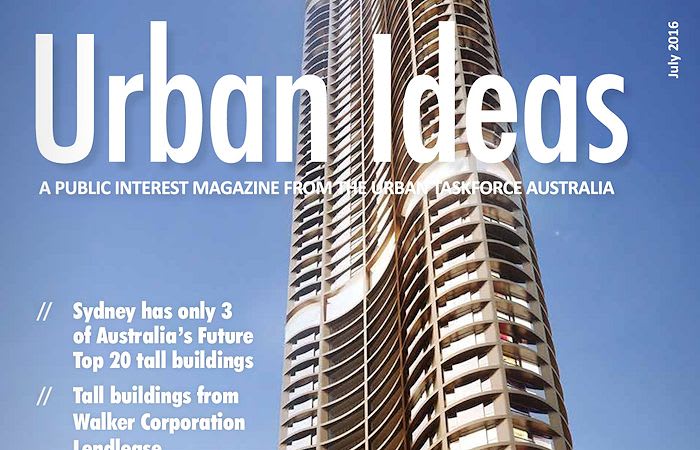Tall tales and Sydney's slump in the skyscraper stakes
It's intriguing to take note of how differing interests play out in the Australian property development industry.
In stark contrast to Sydney's regimented planning controls which have long been in place and Melbourne's recently overhauled inner-city planning controls which are now in play, Urban Taskforce Australia (UTA) last Friday called for a greater number of taller towers across Australia's major cities. The call was made via UTA's Urban Ideas magazine and places the peak body at odds with current policy.
Representing Australia's most prominent property developers, UTA acts with a heavily slanted view toward the New South Wales property industry, so it comes as no surprise that they have shown concern over Sydney's inability to maintain pace with the rest of the nation (essentially Melbourne, Brisbane and the Gold Coast) in the race to create taller skyscrapers.
Whether this is materially relevant to Sydney's growth and prosperity is of course debatable, but UTA argues that increased tower height has a direct relationship to accommodating increased population growth.
The latest Urban Ideas issue shows that Sydney and Parramatta combined will sport only three of Australia's future top 20 tallest towers. Seen below is the up-to-date Urban Ideas table highlighting Australia's current and future tallest buildings.
Australian cities will need to grow up rather than out
Australian cities have grown over the last 200 years on the suburban, garden city model. As these cities grew to 2 or 3 million the low rise model could still work but with Sydney now at 5 million, travel to work has led to massive congestion.
Further horizontal spread will be limited so an increase in densities and heights will be essential to accommodate the growth predicted.
UTA Chief Executive officer: Chris Johnson
Melbourne has been doing some growing of its own over recent years, with a well publicised squad of 200 metre plus towers ranging from planning through to construction.
It has been a little over a year since discretionary plot ratios, mandatory podium height, mandatory setback requirements and mandatory height controls were introduced, intending to provide better amenity outcomes for new inner city developments. Has this policy change adversely affected Melbourne's development industry in any tangible way?
There has been a noticeable slow down in large scale applications handled by the State, but is that the work of policy or organic market forces?
Developers are a shrewd lot and it could be argued that they have merely followed prevailing trends. The buyers current appetite now lies with larger dwellings within smaller projects, with the middle and outer suburbs now doing the heavy lifting of absorbing buyer demand whilst the CBD in particular absorbs higher levels of supply.
Merely asking for taller developments for the sake of continuing growth is an interesting stance as taken by the UTA. Does it really matter that Sydney has a disproportionately small representation of the nation's tallest buildings?
Melbourne standing tall
Policy aside the roll-out of new Melbourne skyscrapers continues at pace.
With Brady Group's Vision Apartments approaching practical completion, six additional projects over 200 metres are at construction. Such is the lag between entering planning and reaching construction, the policy changes implemented by the current State Government last year will have almost an immaterial effect upon the roll-out of projects such is their lengthy delivery timeline.
Massive projects yet to appear on the skyline include Tower Melbourne, Queens Place, West Side Place Towers 1 and 2, 96 Kavanagh Street and 38 Freshwater Place.
Even with rejigged planning laws there still remains scope for exceedingly high towers to take their place in Melbourne's skyline. Crown's hulking Southbank mixed-use project, 51-65 Clarke Street and Sterling Global's Jean Nouvel-designed 383 La Trobe Street are examples of skyscrapers that have been submitted post the new planning regime, with the shortest of the trio at 239 metres.
